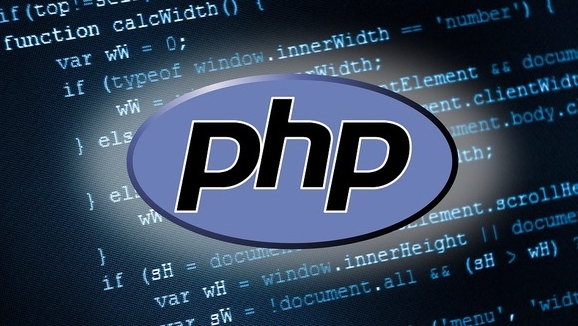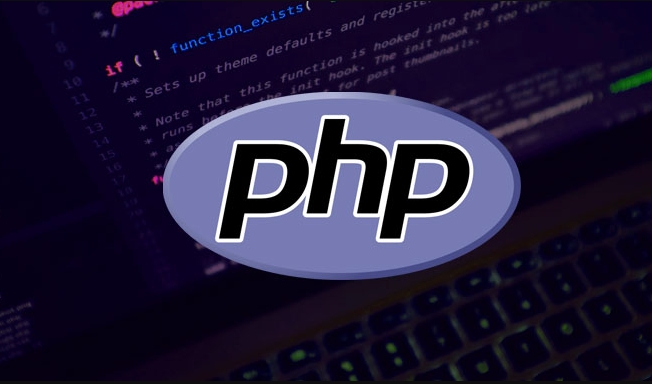The key steps to establish a PHP test environment include: 1. Install the PHP running environment. Windows/macOS can use XAMPP or WAMP. Linux users can use apt or yum to install PHP and Apache, and verify the installation through php -v; 2. Use a web server and database to install Apache or Nginx and MySQL/MariaDB, start the service and place the PHP files in the root directory of the website for testing and access; 3. Use editor and debugging tools, recommend VS Code to cooperate with PHP plug-in and Xdebug to configure breakpoint debugging to improve efficiency; 4. Test whether the environment is normal, create a phpinfo() page to access localhost to confirm that it runs successfully. When encountering problems, you can troubleshoot by checking permissions, configuring paths, and service status.

I want to build a PHP testing environment locally, but it is not that complicated. The key is to install the necessary tools, configure the running environment, and ensure that the code can be debugged normally.

1. Install the PHP running environment
First of all, you have to make your computer run PHP. Windows and macOS users can directly use integrated environments, such as XAMPP or WAMP, which is easy and convenient.
If you are a Linux user, you can use apt (Ubuntu) or yum (CentOS) to install PHP and Apache.

For example: Installing PHP on Ubuntu can do this:
-
sudo apt update -
sudo apt install php php-cli
After the installation is completed, execute php -v to see if there is a version number output to confirm whether it is successful.

2. Pair with web server and database
PHP must cooperate with a web server to access web pages. Apache is the most commonly used and is already in XAMPP. If you are manually installing PHP, remember to install Apache or Nginx.
MySQL or MariaDB is also a common combination. It is recommended to install it during development and testing, some projects rely on database functions.
The simple process is as follows:
- Install Apache:
sudo apt install apache2 - Install MySQL:
sudo apt install mysql-server - Start the service and set up the boot boot
After installation, put the PHP file in the website root directory (such as /var/www/html/ ), and then access it through the browser to see the effect.
3. Use editor and debugging tools
Writing PHP certainly requires a convenient editor. VS Code is very practical with PHP plug-in, supports syntax highlighting, automatic completion, and even debugging.
In terms of debugging, Xdebug can be considered. It allows you to break points and view variable values ??in the editor, greatly improving the efficiency of troubleshooting.
Key steps to configure Xdebug:
- Install Xdebug:
sudo pecl install xdebug - Modify
php.inito addzend_extension=xdebug.so - Configure remote debug port and IDE key values
Once configured, click "listen" in VS Code to start debugging.
4. Test whether your environment is normal
Write a simple PHP file to test whether the environment is accessible:
<?php phpinfo(); ?>
Save it as info.php and put it in the website root directory. Visit http://localhost/info.php . If you can see a bunch of information pages about PHP, it means everything is normal.
Basically that's it. It is not difficult, but details are easy to ignore, such as permission issues, configuration file path errors, service not started, etc. If you encounter problems, read the logs more often, and they can generally be solved.
The above is the detailed content of How to build a local test environment with PHP?. For more information, please follow other related articles on the PHP Chinese website!

Hot AI Tools

Undress AI Tool
Undress images for free

Undresser.AI Undress
AI-powered app for creating realistic nude photos

AI Clothes Remover
Online AI tool for removing clothes from photos.

Clothoff.io
AI clothes remover

Video Face Swap
Swap faces in any video effortlessly with our completely free AI face swap tool!

Hot Article

Hot Tools

Notepad++7.3.1
Easy-to-use and free code editor

SublimeText3 Chinese version
Chinese version, very easy to use

Zend Studio 13.0.1
Powerful PHP integrated development environment

Dreamweaver CS6
Visual web development tools

SublimeText3 Mac version
God-level code editing software (SublimeText3)
 PHP Variable Scope Explained
Jul 17, 2025 am 04:16 AM
PHP Variable Scope Explained
Jul 17, 2025 am 04:16 AM
Common problems and solutions for PHP variable scope include: 1. The global variable cannot be accessed within the function, and it needs to be passed in using the global keyword or parameter; 2. The static variable is declared with static, and it is only initialized once and the value is maintained between multiple calls; 3. Hyperglobal variables such as $_GET and $_POST can be used directly in any scope, but you need to pay attention to safe filtering; 4. Anonymous functions need to introduce parent scope variables through the use keyword, and when modifying external variables, you need to pass a reference. Mastering these rules can help avoid errors and improve code stability.
 How to handle File Uploads securely in PHP?
Jul 08, 2025 am 02:37 AM
How to handle File Uploads securely in PHP?
Jul 08, 2025 am 02:37 AM
To safely handle PHP file uploads, you need to verify the source and type, control the file name and path, set server restrictions, and process media files twice. 1. Verify the upload source to prevent CSRF through token and detect the real MIME type through finfo_file using whitelist control; 2. Rename the file to a random string and determine the extension to store it in a non-Web directory according to the detection type; 3. PHP configuration limits the upload size and temporary directory Nginx/Apache prohibits access to the upload directory; 4. The GD library resaves the pictures to clear potential malicious data.
 Commenting Out Code in PHP
Jul 18, 2025 am 04:57 AM
Commenting Out Code in PHP
Jul 18, 2025 am 04:57 AM
There are three common methods for PHP comment code: 1. Use // or # to block one line of code, and it is recommended to use //; 2. Use /.../ to wrap code blocks with multiple lines, which cannot be nested but can be crossed; 3. Combination skills comments such as using /if(){}/ to control logic blocks, or to improve efficiency with editor shortcut keys, you should pay attention to closing symbols and avoid nesting when using them.
 How Do Generators Work in PHP?
Jul 11, 2025 am 03:12 AM
How Do Generators Work in PHP?
Jul 11, 2025 am 03:12 AM
AgeneratorinPHPisamemory-efficientwaytoiterateoverlargedatasetsbyyieldingvaluesoneatatimeinsteadofreturningthemallatonce.1.Generatorsusetheyieldkeywordtoproducevaluesondemand,reducingmemoryusage.2.Theyareusefulforhandlingbigloops,readinglargefiles,or
 Tips for Writing PHP Comments
Jul 18, 2025 am 04:51 AM
Tips for Writing PHP Comments
Jul 18, 2025 am 04:51 AM
The key to writing PHP comments is to clarify the purpose and specifications. Comments should explain "why" rather than "what was done", avoiding redundancy or too simplicity. 1. Use a unified format, such as docblock (/*/) for class and method descriptions to improve readability and tool compatibility; 2. Emphasize the reasons behind the logic, such as why JS jumps need to be output manually; 3. Add an overview description before complex code, describe the process in steps, and help understand the overall idea; 4. Use TODO and FIXME rationally to mark to-do items and problems to facilitate subsequent tracking and collaboration. Good annotations can reduce communication costs and improve code maintenance efficiency.
 Quick PHP Installation Tutorial
Jul 18, 2025 am 04:52 AM
Quick PHP Installation Tutorial
Jul 18, 2025 am 04:52 AM
ToinstallPHPquickly,useXAMPPonWindowsorHomebrewonmacOS.1.OnWindows,downloadandinstallXAMPP,selectcomponents,startApache,andplacefilesinhtdocs.2.Alternatively,manuallyinstallPHPfromphp.netandsetupaserverlikeApache.3.OnmacOS,installHomebrew,thenrun'bre
 How to access a character in a string by index in PHP
Jul 12, 2025 am 03:15 AM
How to access a character in a string by index in PHP
Jul 12, 2025 am 03:15 AM
In PHP, you can use square brackets or curly braces to obtain string specific index characters, but square brackets are recommended; the index starts from 0, and the access outside the range returns a null value and cannot be assigned a value; mb_substr is required to handle multi-byte characters. For example: $str="hello";echo$str[0]; output h; and Chinese characters such as mb_substr($str,1,1) need to obtain the correct result; in actual applications, the length of the string should be checked before looping, dynamic strings need to be verified for validity, and multilingual projects recommend using multi-byte security functions uniformly.
 Learning PHP: A Beginner's Guide
Jul 18, 2025 am 04:54 AM
Learning PHP: A Beginner's Guide
Jul 18, 2025 am 04:54 AM
TolearnPHPeffectively,startbysettingupalocalserverenvironmentusingtoolslikeXAMPPandacodeeditorlikeVSCode.1)InstallXAMPPforApache,MySQL,andPHP.2)Useacodeeditorforsyntaxsupport.3)TestyoursetupwithasimplePHPfile.Next,learnPHPbasicsincludingvariables,ech






